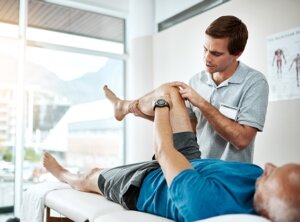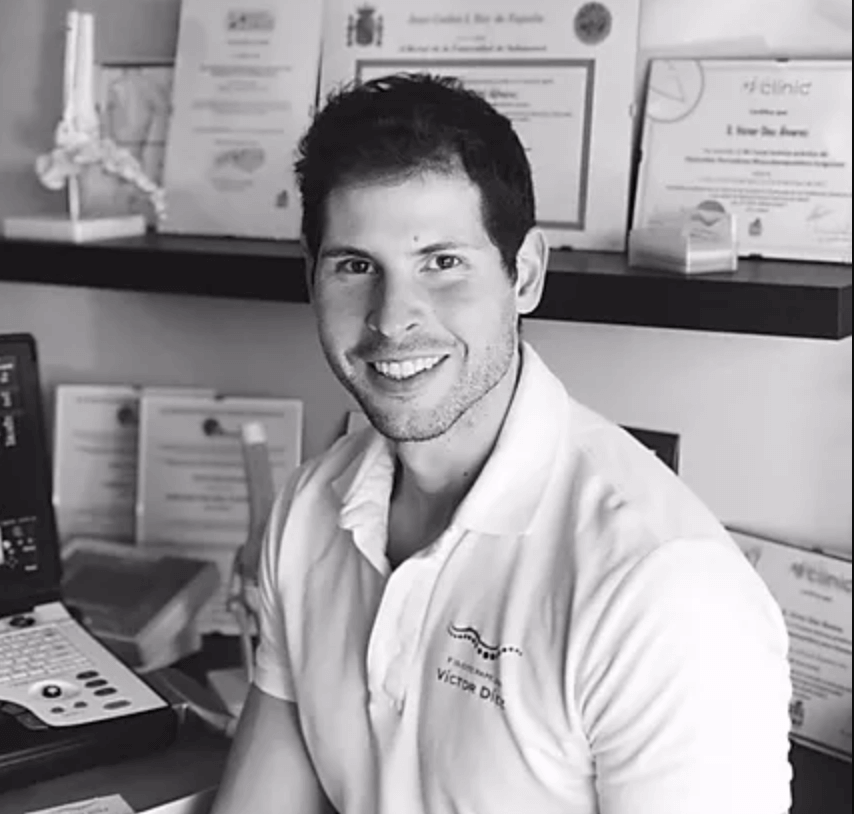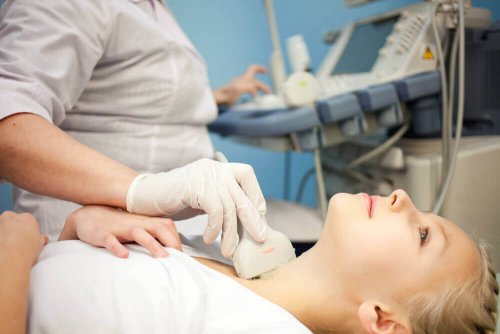The Best and Most Effective Physiotherapy Treatments


Written and verified by the physical therapist Víctor Díez
In today’s article, we’ll discuss the best and most effective physiotherapy treatments.
It’s becoming more and more common to go to a physiotherapist. This practice is especially popular among amateur and professional athletes. When it comes to their training, athletes have to push their limits and physiotherapy helps them prevent possible injuries. In addition, these treatments can help them recover from an injury in the shortest time possible.
We’re going to talk about sports physiotherapy and the most cutting-edge treatments that exist. However, before we start, it’s important to clarify something: there’s no real difference between the physical therapy a professional athlete receives and that which an amateur receives.
In addition, we want to share that everyone can access quality physiotherapy treatments. The most important thing is to find a good physiotherapist who is up-to-date on their information, continuously studies new research, constantly trains, and uses therapies that have scientific and clinical evidence proving that they’re valid and work.
Differences in injuries suffered by professional and amateur athletes
First, you should know that most injuries are the cause of an excess load on our tissues (muscle, tendon, ligament, etc.) that can’t support that tension. This can happen acutely or chronically. In the latter, the injury is less intense, but it persists over time.
In addition to the excess load, biomechanics, training techniques, poor physical preparation, lack of rest, poor diet, as well as many other factors can play a role. These aspects tend to aggravate the main reason for the injury.
Therefore, if we take that into account, there’s no difference between a professional athlete’s injury and that of an amateur athlete. The disparity between the two comes from the fact that a professional athlete needs to be active and able to compete. Their ability to do so is the most difficult and decisive part of their recovery. Generally, they find success when they can balance their training with proper rest.
And, last but not least, the physiotherapist will have ultrasound equipment at their disposal. They will use that to assess and treat the issue, which will ensure the treatment is safe and effective.
This new technology marks the new wave of physiotherapy. Many people still associate this discipline with massages, infrared, and TENS. However, we’re in the 21st century now and that has changed a lot.
Keep reading: Heat and Cold: Essential for Sports Injuries
Effective physiotherapy treatments that exist today
Physiotherapy treatments have changed over time and adapted to new technologies. Although many physiotherapists will still use manual therapy, they’re no longer the only option. Currently, many rehabilitation rooms have new machinery that will optimize the physiotherapist’s work.
Let’s take a look at them.
Diagnostics: Ultrasounds

The ultrasound that physiotherapists use is not actually a type of treatment. Instead, it’s a tool that they use as a complement to physical assessments and tests. Specifically, it allows the professional to observe the patient’s injury over time.
In doing so, the physiotherapist can collect more precise information about the type of injury, where it’s located, recovery time, whether the athlete can play or not, and the most effective physiotherapy treatments.
If the ultrasound is now the eyes of the professional, the needles (acupuncture type) are now their hands’ helpers. They allow the physiotherapist to access any injured area, and they can use the needle itself to treat the issue. In addition, they can use it as an electrode to apply some form of electrotherapy to specific areas.
When the professional uses both the tools together, the ultrasound plus the needles, they can obtain relevant results in just a few sessions. However, they will always need to use the needles with the ultrasound to guarantee safety and precise work. That will ensure the patient is getting the most effective treatment.
Effective physiotherapy treatments: Electrolysis Percutanea intratisular (EPI)
Jose Manuel Sanchez created the Electrolysis Percutanea intratisular in Spain 20 years ago. This technique has revolutionized physiotherapy. It shortens recovery times and the athletes’ symptoms.
These injuries usually occur because of degenerative changes in the collagen fibers as a result of the regeneration process of the tendons failing. EPI reduces your symptoms, modifies your pH, helps with the inflammatory process at the site of the injury, and, as a result, helps with recovery.
Professionals will also use this treatment for muscle and ligament injuries, bursa sacks, and ganglion cysts. It consists of using a needle guided by ultrasound in the area of the injury. Then, the physiotherapist will use a direct or galvanic current to help heal the injury.
Functional neuromodulation
Very few people know about this technique. However, in a few years, there will be a lot of talk about it. That’s because the way physiotherapists work, their treatments, and especially athletes are constantly evolving. Neuromodulation improves athletic performance and prevents injuries. As a result, it’s one of the most effective physiotherapy treatments for any patient.
Dr. Alejandro Elorriaga, a Spanish sports doctor, developed this treatment. It consists of stimulating different points of the peripheral nervous system with a current through needles. It’s a painless intervention that will immediately cause lasting changes in your muscles’ ability to contract.
In addition, it helps reduce pain through modulate sensory information and it intervenes in the autonomic nervous system. In other words, this treatment works on your nervous system which is responsible for governing your body’s functions.
Effective physiotherapy treatments: Dry needling
Dry needling is one of the most effective physiotherapy treatments and doctors have been using it for years. Because of that, it’s often the best-known treatment among patients, and it’s popular because of its positive effects. Drs. Travell and Simons developed this technique.
For those who don’t know about it, the professional will use an acupuncture needle in the area of the muscle where you have trigger points (also known as “contractures”). Dry needling reduces the tension in your muscle fibers, helps you regain mobility, and can eliminate pain from the active trigger points.
Also read: Dry Needling; Description and Benefits
Exercise and manual therapy

Of course, we can’t forget to highlight the two tools that are still essential in physiotherapy— manual therapy and therapeutic exercise. Manual therapy aims to stimulate the circulatory system. It helps carry blood to your tissues and promotes recovery. In addition, it mobilizes the injured areas and helps your joints become more flexible.
As we previously mentioned, the exercise will work to adapt your injured tissues back to more intense workloads that they can tolerate. Also, it will help you prevent future injuries.
Conclusion
In this article, we’ve discussed some of the best and most effective physiotherapy treatments available. However, there are many other valid options. The choice between one treatment or another largely depends on the type of injury and your doctor’s guidance. There is no one perfect technique that will work for every patient.
The most important thing is to find a physiotherapist with good reasoning and who will assess the situation correctly. That way, your doctor will be able to decide and utilize the best techniques.
All cited sources were thoroughly reviewed by our team to ensure their quality, reliability, currency, and validity. The bibliography of this article was considered reliable and of academic or scientific accuracy.
- Aicale R, Tarantino D, Maffulli N. Overuse injuries in sport: a comprehensive overview. J Orthop Surg Res. 2018 Dec 5;13(1):309. doi: 10.1186/s13018-018-1017-5. PMID: 30518382; PMCID: PMC6282309.
- Owens JG, Rauzi MR, Kittelson A, et al. How New Technology Is Improving Physical Therapy. Curr Rev Musculoskelet Med. 2020;13(2):200-211. doi:10.1007/s12178-020-09610-6
- Whittaker JL, Ellis R, Hodges PW, et al. Imaging with ultrasound in physical therapy: What is the PT’s scope of practice? A competency-based educational model and training recommendations. Br J Sports Med. 2019;53(23):1447-1453. doi:10.1136/bjsports-2018-100193
-
Abat F, Diesel WJ, Gelber PE, Polidori F, Monllau JC, Sanchez-Ibañez JM. Effectiveness of the Intratissue Percutaneous Electrolysis (EPI®) technique and isoinertial eccentric exercise in the treatment of patellar tendinopathy at two years follow-up. Muscles Ligaments Tendons J. 2014 Jul 14;4(2):188-93. PMID: 25332934; PMCID: PMC4187605.
- Fishman MA, Antony A, Esposito M, Deer T, Levy R. The Evolution of Neuromodulation in the Treatment of Chronic Pain: Forward-Looking Perspectives. Pain Med. 2019;20(Suppl 1):S58-S68. doi:10.1093/pm/pnz074
- Dunning J, Butts R, Mourad F, Young I, Flannagan S, Perreault T. Dry needling: a literature review with implications for clinical practice guidelines. Phys Ther Rev. 2014;19(4):252-265. doi:10.1179/108331913X13844245102034
- Bernal-Utrera C, Gonzalez-Gerez JJ, Anarte-Lazo E, Rodriguez-Blanco C. Manual therapy versus therapeutic exercise in non-specific chronic neck pain: a randomized controlled trial. Trials. 2020;21(1):682. Published 2020 Jul 28. doi:10.1186/s13063-020-04610-w
This text is provided for informational purposes only and does not replace consultation with a professional. If in doubt, consult your specialist.








